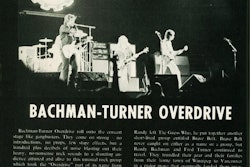Carrier Hunt
In your search for a carrier to lease on to, remember you won’t find the perfect fit. No carrier is likely to meet all of your specifications. Yet doing your homework, including writing a list of questions and interviewing other truckers, will help provide information needed to make an informed decision.
Some of your investigation can be handled by examining company websites and recruiting ads, but much of the pertinent information comes from talking to people. Networking with other owner-operators can give you current information on pay packages, options and company culture, says Joe Rajkovacz, director of regulatory affairs at the Owner-Operator Independent Drivers Association.
If they have customers that are a pain to deal with and slow to pay, that’s usually indicative of a carrier that is not well run, either.”
— Karl Phares
You want to work with a carrier that will treat you fairly and answer your questions honestly, but detecting if that’s practiced isn’t easy. You can get an idea how they will treat you by talking with a recruiter or dispatcher, says Chris Brady, president of Commercial Motor Vehicle Consulting.
In evaluating carriers, Randy Dudney says it’s important to interview other operators to see how they’re treated by a company.“How open are they to giving you information?” he asks. Ask for independent contractor references and other outsiders who might discuss the carrier’s business practices and reputation.
Randy and Sandy Dudney are talking with other drivers, often getting an earful of good or bad reports. If a driver praises a company, the Dudneys ask about interactions with dispatch and how the company performed if the driver had problems. “We want to find out who was at fault,” she says.
Karl Phares desires a smaller carrier where he can “be treated as a human being rather than just a number,” he says. “Some companies I want to stay away from will hire anybody with a CDL. What kind of customers do they have? If they have customers that are a pain to deal with and slow to pay, that’s usually indicative of a carrier that is not well run, either.”
Pay package
One of the most important questions you’ll want to ask is about pay. Ask if fuel surcharges are available and if they are packaged with base pay or paid separately, Brady says. David Wolff, fleet lead business consultant at financial services firm ATBS, advises checking if the fuel surcharge is nationwide or regional and what miles-per-gallon the surcharge is based on — 6 mpg is common. Confirm that 100 percent of the surcharge is passed along to owner-operators.
You’ll also want to ask if the carrier offers detention pay, layover pay, empty mile compensation and pay for loading and unloading or reimbursement for lumper charges. Do they reimburse for tolls? Do they pay your fuel taxes or are they charged back to you? When are settlements paid?
Does the carrier impose chargebacks? Ask about paying for primary liability insurance or onboard fleet management systems such as electronic recorders or Qualcomm tracking systems.
Home time
In assessing routes, loads and miles, you want to assess your preferred lifestyle. Ask if certain routes or regions are open that would accommodate your desired home time. Make similar inquiries about specialized work, such as heavy-haul or high-touch loads.
Ask carriers about available miles and routes and question their operators about what miles they’re getting, too. If the carrier is oriented to independent contractors, you’ll more likely get consistent miles.
Inquire where the carrier runs and if you will have a choice of routes and loads. If frequent home time is important to you, ask how often operators get home. “Good owner-operators don’t want to gypsy around the countryside and be away from their families for weeks, if not months, at a time,” Rajkovacz says.
A Seller’s Market
In searching for a carrier, assess the demand for owner-operators of your experience level. You’ll want to know what carriers are paying in today’s market.
Before the recession, “carriers would take anyone they could get,” says David Wolff of ATBS. During the recession, owner-operators were in low demand. Now, as the recession lifts, carriers have “taken time to weed out the deadwood, and they don’t want to rehire it.”
If you are a safe, experienced driver, the Compliance, Safety, Accountability program’s addition of operator accountability for inspection and accident data could work in your favor. Good carriers cannot afford to hire sub-par drivers.
The increasing demand for owner-operators is reflected in compensation. Trucker pay started rebounding the first quarter of 2010 after falling from 2007 to 2009, though it hasn’t regained what was lost.
Driver pay increased most among flatbed carriers, led by Maverick and Boyd Bros. Both increased pay 6 cents a mile in the first half of last year, says Gordon Klemp, principal of the National Transportation Institute, which surveys mid-size and large carriers. Dry van and refrigerated carriers increased pay 1 and 2 cents, respectively, in that period. In a 2010 survey, 88 percent of carriers said they planned to raise pay 2 to 4 cents a mile through this June.
Klemp estimates 35 percent of flatbed carriers, 27 percent of refrigerated and 13 percent of dry van companies offer sign-on bonuses. They range from $250 to $2,500 for solo drivers, with $1,000 being the most common amount. Bonuses for teams run $5,000 to $10,000.









